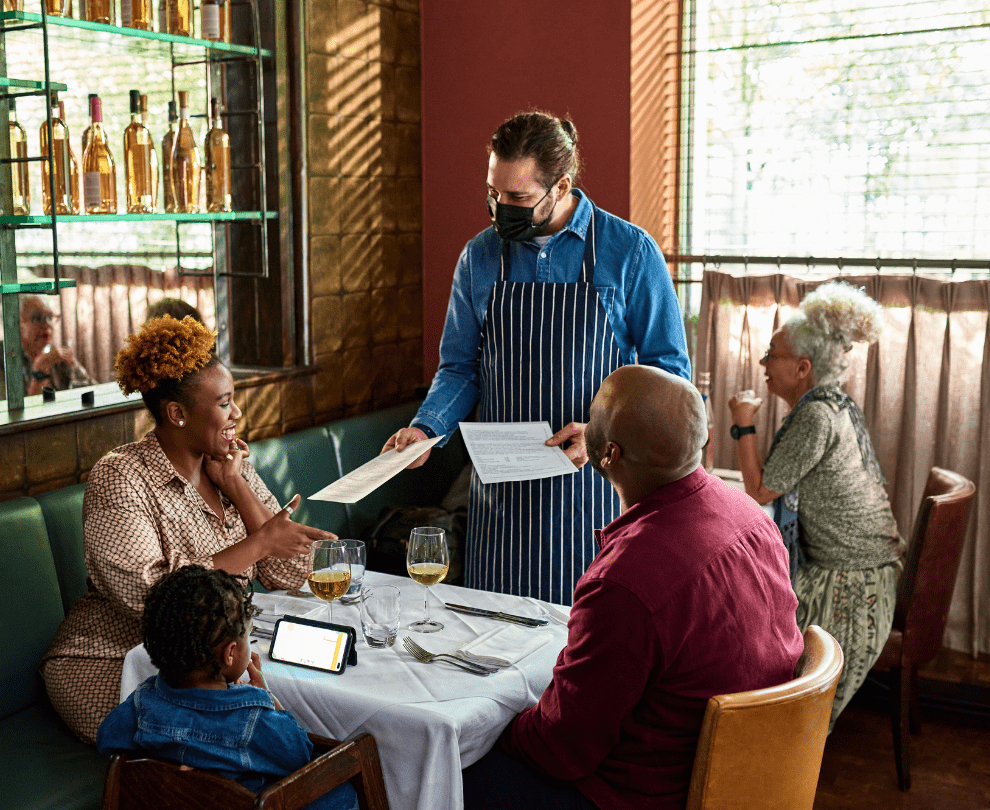Sign up for restaurant insights
More and more diners care about a restaurant’s sustainability practices. According to the 2020 National Restaurant Association Industry Report, 76% of adults said they are more likely to visit a restaurant that offers locally sourced food. If your restaurant is not tapping into the locally sourced food movement, you may be missing out on potential customers.
4 ways your restaurant can incorporate locally sourced food into your menu
Here are four tips for incorporating locally sourced ingredients into your menu without breaking the bank.
1. Start slow and set realistic goals
Sourcing local ingredients can be higher-cost due to working with small suppliers, which means switching your menu overnight to feature locally sourced ingredients can be costly. Help ease your restaurant’s transition by setting goals within reach, such as purchasing a small amount of locally sourced ingredients or only purchasing locally sourced food that is close in cost to your traditional ingredients.
It might also make sense for you to do a test run incorporating locally sourced ingredients into your menu. Consider featuring a special on your menu or even hosting a weekly local foods night that offers a special entre entirely made from local ingredients.
Offering locally sourced food for sale within your restaurant in a retail model is also a great way to introduce the concept to your customer base. When indoor dining was shut down in New York during the height of the pandemic, The Council Cafe transformed their restaurant storefront into a local market featuring locally produced bread from Naira Bread in New York.
The Council Cafe’s local market supported other local businesses and made locally sourced food accessible to their customer base.
2. Use locally-sourced food to fuel your seasonal menu items
Sticker shock is often enough to keep many restaurant owners from incorporating locally sourced ingredients into their menus, but it doesn’t have to be. By purchasing in-season produce, you can include local ingredients that are both more affordable and higher quality.
Lighthouse, a farm-to-table restaurant in New York City, has found success in leveraging locally sourced ingredients in their seasonal dishes. They even put their organic food waste to work, by using vegetable and fruit scraps to make compost for their herb garden, which is then used to create their own in-house spice mixes.
While buying locally sourced food can seem expensive at first, being strategic with your menu and utilizing in-season ingredients can help decrease the cost of locally sourced food.
3. Seek out sustainable seafood from local fishers
According to the World Wildlife Foundation, “fishing is one of the most significant drivers of declines in ocean wildlife populations.” While the actual act of fishing is not terrible for the environment, overfishing, which is when fish are removed from the water faster than the species can replenish, is detrimental to our oceans.
Taking the extra step to seek out sustainable seafood options from local fishmongers is not only the right move for the environment but can also help your restaurant reach new diners. According to a recent Marine Stewardship Council survey, 48% of North American shoppers are willing to pay more for seafood from a certified sustainable fishery.
Fish, a sustainable seafood restaurant based in Sausalito, California, has become a success by creating inventive dishes that feature sustainability caught season. By purchasing directly from local fishers, Fish can confidently communicate to their customers the exact path the seafood took from the water to their plate.
4. Build relationships with local farmers and suppliers
Buying locally sourced food and ingredients can seem daunting at first, but there are many resources available to help connect you to local farmers and suppliers. Visit your local farmers market to meet local farmers or network with farm-to-table restaurants in your area to learn which local suppliers they’ve had success with in the past.
Once you’ve found local farmers and suppliers to work with, focus on establishing a meaningful relationship with them. Small gestures, such as thanking your suppliers and keeping them updated on any changes within your restaurant, can go a long way toward showing suppliers that you value them as a business partner.
The more time you invest in building these relationships, the greater chance you’ll have to receive the ingredients you need. You may even enjoy some unexpected benefits such as the first pick of produce or discounts for your continued loyalty.
Grow your customer base with locally sourced food
Tapping into the local food movement is a great way to grow your customer base and positively impact the environment. Using locally sourced ingredients does not need to be an expensive or time-consuming task for your restaurant. Start by developing relationships with local farmers and fishers, creating seasonal dishes, and setting realistic sustainability goals for your restaurant model.
Are you interested in learning more restaurant sustainability tips? Check out 10 restaurant sustainability tips that can help you reduce food waste and improve your restaurant’s profit margins.
Grubhub customers are hungry for restaurants that feature fresh ingredients and sustainable practices. Signup to become a Grubhub restaurant partner today.






